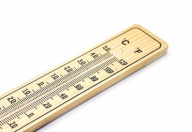Temperature in the workplace: the law
PallMallBelieve it or not, if your workplace falls below a certain
temperature, you will be breaking the law. Here are the legal
issues around temperature in the workplace so that you can keep you
and your staff comfortable this winter without falling foul of the
law.
Legislation in the form of The Workplace (Health, Safety and
Welfare) Regulations of 1992 provides employers with guidelines
about proper temperatures in the workplace. The law states that
"during working hours, the temperature in all workplaces inside
buildings shall be reasonable."
These guidelines make it clear that the minimum temperature of a
workplace should be 16°C if you're doing work that doesn't require
much physical effort and 13°C if you're doing work that does
require a lot of physical effort. Temperatures in working
environments should "provide reasonable comfort without the need
for special clothing".
If in some cases this is difficult to achieve because of hot or
cold processes (ie. a bakery or a coldstore), employers should take
"all reasonable steps
to achieve a temperature which is as possible
to comfortable." This could take the form of supplying additional
insulating clothing.
If temperatures dip below these levels and the comfort and
efficiency of your staff begins to suffer, then employers have a
legal obligation to ensure that steps are taken to raise these
temperatures to meet the minimum requirement.
Keeping your workplace warm-and legal
The Health and Safety Executive recommends that employers adopt
the following measures if temperatures fall below the required
level:
- Reduce the amount of time that employees are exposed to cold
areas
- Provide an adequate heating system, with extra heaters if need
be
- Offer protective clothing to deal with harsh temperatures
- Reduce any draughts
- Provide enough breaks for employees in a warm area
—
Pall Mall Estates have a wide range of low cost commercial properties across the UK.
Take a look at our available spaces here or get in touch with our experienced team here.







